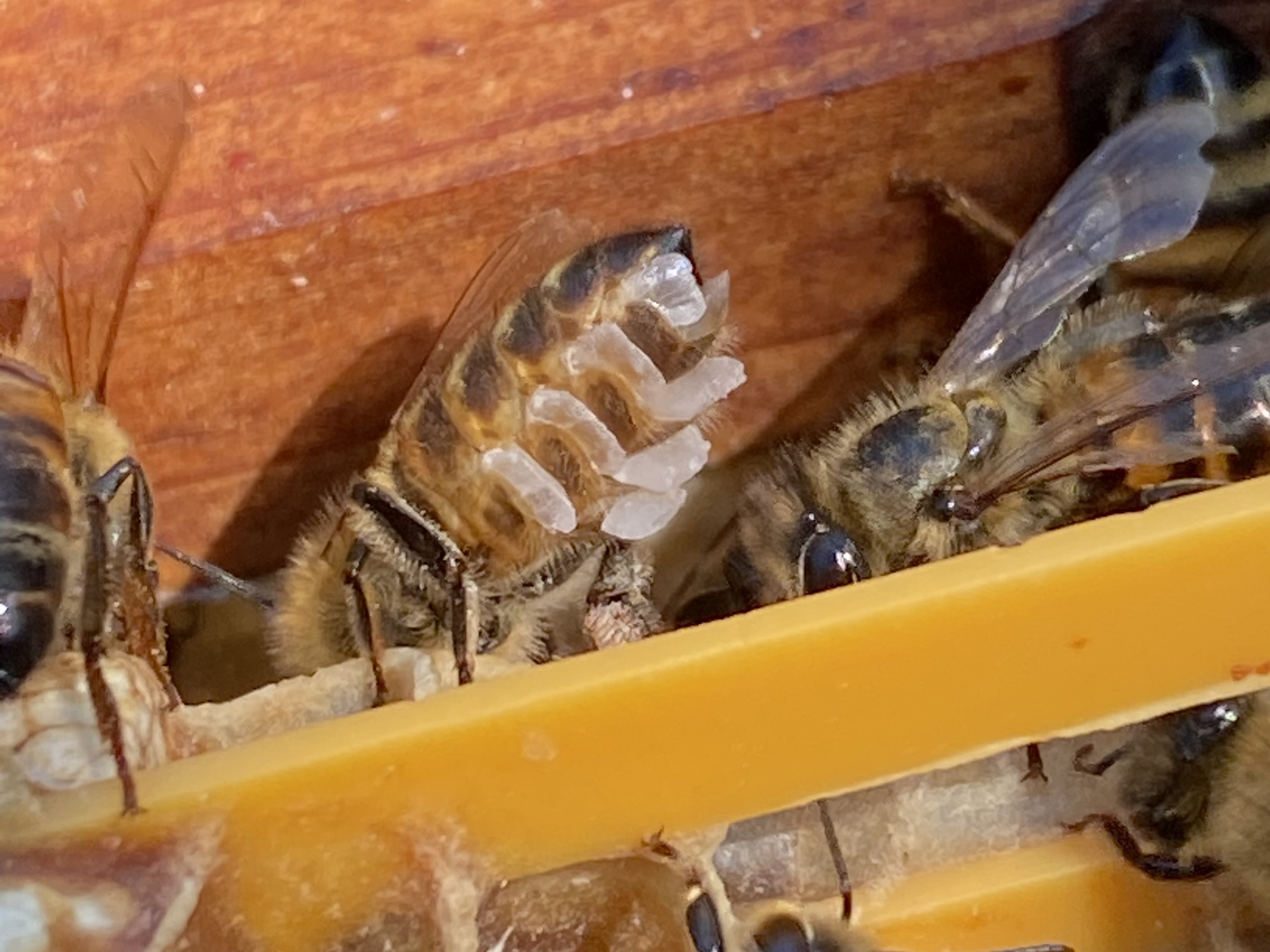Honey bees produce small wax scales from 8 wax-producing glands found on the underside of their abdomens. These wax scales are then shaped by the worker bee using her legs and mandibles to form their well known honeycomb structures. This worker bee is hard at work building up new comb in a miniature nucleus colony used for breeding queen honey bees. At the Honey Bee Research Centre, some of our raised queens participate in our selective breeding program in which we are selecting for traits including hygienic behaviour and grooming behaviour which reduce colony susceptibility to Varroa mites to try to help reduce the devastating impacts these pests can have on colonies.
